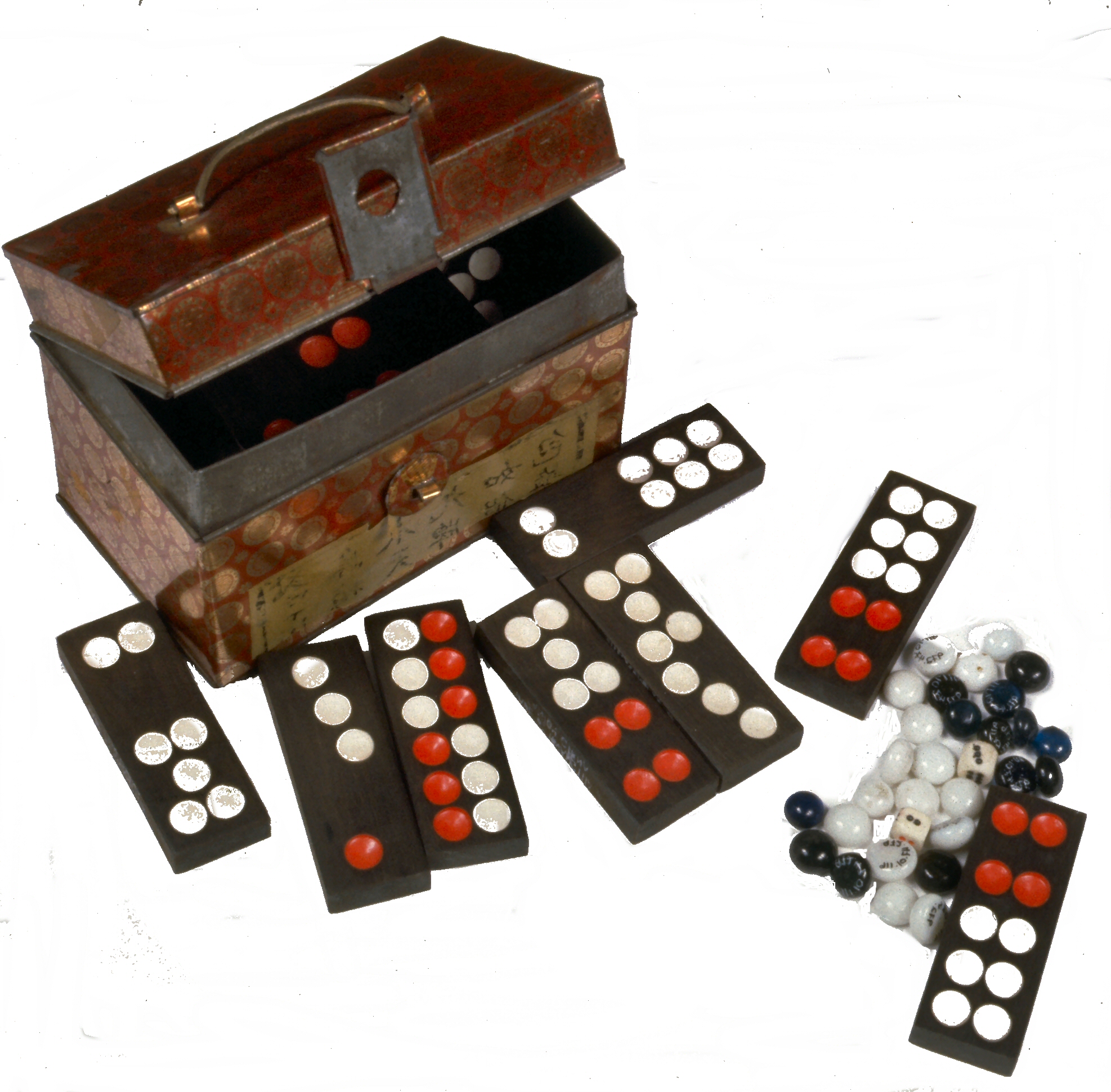
The origins of playing cards are somewhat obscure. There are many unproven, controversial, and sometimes nonsense theories concerning where and when people started to play games with cards. For example, some scholars indicate that playing cards were invented about 1000ad in China or Korea, and they may have evolved from a set of Chinese dominoes similar to the 19th century set (in the Museum's collection) pictured on the left. For a graphic paper on this subject, click on the Wilkinson Article in the left menu.

Other scholars indicate that dominoes as well as playing cards evolved from "flattened", marked, arrows much earlier than 1000 AD. At times, one theory appears to be the "best one", and at times another seems more acceptable. On the other hand, some theorists indicate that around the 12th century AD, circular suited playing cards from India (which may or may not have come from China) found their way to Egypt and these and a rectangular deck were used in Egypt. By the 14th century AD the rectangular Egyptian deck found its way to Italy and Spain and soon after spread throughout Europe.
Within each country a number of modifications were made to the deck of playing cards. It has been reported that the Tarot deck for example, was invented in Italy about 1440 AD, but was based upon existing decks. Some authors are unhappy with these facts, and would have it that the other decks are based upon the Tarot deck!
Today playing cards are known all over the world, as evidenced by the examples from many cultures in the Museum collection. If you wish to see more specific information about ethnography, and early geographic diffusion of games, click on Game Diffusion in the left menu.

Playing cards are not the same everywhere, and at times the deck differs for different games. This painting is an example of this latter fact. It was painted by Gustave Caillebotte (1848-1894) and is titled Partie de bésigue (The Bezique Game). Painted in 1880, it is now held in a private collection in France. Bezique, according to some references is a card game related to "pinochle" and "piquet". Bezique uses a 64 card deck and is a trick-winning game in which the object is to acquire certain specific scoring combinations. It was popular in Europe in the 19th century. For certain games, a deck will have less cards than Bezique, while in other games a deck may have many more cards.
The number of cards may vary from deck to deck and game to game, but other aspects of playing cards also vary. Depending upon the culture and the card game - size of cards, shape of cards, and the material from which cards are made may also vary. Usually card decks are divided into "suits" and the suit symbol that indicate the denomination of each card (called by collectors "indices" or "indicators") vary from culture to culture. The design of "Face" or "Court" cards as well as the indicators of a suit (called by collectors "pattern") also varies from geographic region to region.
If you are interested in comparative information about suit indicators and patterns on European decks, click on the left menu item "Suit Symbols" page. If wish to view national and regional decks in the Museum collection, click on the "Playing Card" page item in the left menu.
Last update May 25, 2007